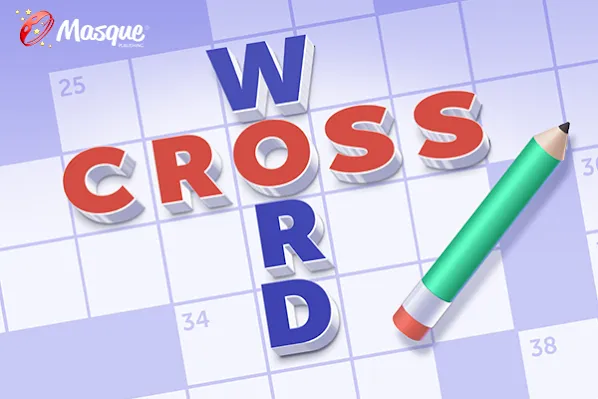Is ‘twin telepathy’ real? Here’s what scientists say.

They finish each other’s sentences, show up wearing the same outfit without planning it, and sometimes even claim to feel each other’s pain. With around half a million sets born each year, twins have long captivated our collective curiosity.
But it’s not just their shared DNA, matching appearances, or mirrored behaviors—it’s the uncanny way they seem to be connected on a deeper level that both intrigues and mystifies us. “There are a great number of unique claims and myths perpetuated about twins,” says Joanne Broder, a practicing psychologist, fellow of the American Psychological Association, and a mother of twins herself.
One of the most persistent of these misconceptions is twin telepathy—a supposed extrasensory bond between twins that transcends space and time. While real-life anecdotes abound, the scientific evidence remains elusive. “Even if it’s not ‘telepathy,’ it is fascinating how deeply attuned twins are to one another’s emotions and needs,” says Tania Johnson, a practicing psychologist and co-founder of the Institute of Child Psychology in Alberta, Canada.
Here’s what’s behind the myth, how scientists have tried to prove it, and why the answer is still up for debate.
What is “twin telepathy?”
Twin telepathy is the belief that twins—especially identical (monozygotic) ones—can sense each other’s feelings, thoughts, or physical sensations across distance without using the five senses. Supporters describe it as a kind of “silent knowing,” says Johnson; an instinctive awareness that might alert one twin to danger, mirror the other’s pain, or spark the same thought at the same instant.
(Twins can become ”unidentical“—and more fascinating twin facts.)
The anecdotes can be uncanny or downright dramatic. A twin feels a sharp pain in her arm just as her sister breaks hers miles away. Another is gripped by sudden dread at the exact moment his twin’s car crashes. The mental overlap can be so strong, says Nancy Segal, director of the Twin Studies Center at California State University, Fullerton, that “many identical twins are unfortunately accused of cheating—even when taking tests apart.”
Scientists typically frame the idea through the lens of extrasensory perception (ESP), in which thoughts and feelings are said to be transmitted without sensory input. Some theorize that the exceptionally close emotional and biological bonds of twins might serve as a conduit for these mental transmissions.
The concept gained traction in the late 19th century, at the intersection of a growing interest in spiritualism and early psychological science. The Society for Psychical Research (SPR), founded in London in 1882, was among the first organizations to collect reports of telepathy, including among twins. British author and parapsychologist Frederic W.H. Myers—a founding SPR member—coined the term “telepathy” and included several twin-related cases in his 1903 book Human Personality and Its Survival of Bodily Death, such as twins reportedly feeling each other’s pain or sharing thoughts from afar.
Similar inquiries continued in the United States over the ensuing decades. University of Chicago professor Horatio H. Newman co-authored one of the first major scientific studies on twins in the 1930s and later published Twins and Super-Twins, which included anecdotes of apparent telepathy. Around the same time, parapsychologists J.B. and Louisa Rhine of Duke University similarly documented twin accounts during their broader ESP research. However, their experiments focused more on card guessing and remote viewing than on twin-specific phenomena.
Despite such early interest, the field never gained solid scientific footing. “We’ve had to rely on what the scientific findings actually are,” says Segal.
Why the science remains murky
Proving—or disproving—twin telepathy has never been straightforward. “There is not a great deal of current research on this subject,” says Broder. “Although the topic is neither closed nor disproven, the twin dynamic is complex.”
Still, a few studies have kept interest alive. A 2013 pilot study in the Journal of Scientific Exploration exposed one of each pair of identical twins to abrupt stimuli such as loud noises or heat while monitoring the other’s physiological responses. In one of four pairs, the non-stimulated twin showed a response that was considered “above chance.” A Danish study from the year before yielded similarly suggestive—though not definitive—findings.
(These twins will make you rethink race.)
More recently, Swedish research published in 2024 involved 91 stimulus trials across three experiments using multiple pairs of identical twins. In each trial, one twin was exposed to a stimulus while the other’s electrodermal activity was monitored. A blind judge was able to correctly identify the stimulation epoch in 18 of the 91 trials—nearly double the 11 hits expected by chance. While the researchers did not claim to prove telepathy, they described the results as “statistically significant” and “warranting further study.”
Other efforts—including surveys conducted by the SPR and electroencephalogram studies of brainwave patterns—have noted certain correlations between twins, but none have conclusively demonstrated telepathic communication.
Even among the most intriguing findings, follow-up research often fails to replicate results. “And many studies show no telepathic connection at all,” says Johnson. For example, psychologist Susan Blackmore’s well-known 1993 experiment asked twins to mentally transmit randomly selected images under controlled conditions. The results, she concluded, were no better than chance.
Such inconsistencies among studies often “come down to how hard this is to actually measure,” says Johnson. “And there's added conflict when excitement bumps up against science.”
In the end, “the majority of studies have found no evidence of ESP, and the few that have shown significant findings have not been replicated,” says Segal. In short, “there is no credible scientific evidence that twin telepathy exists.”
Shared lives, not shared minds
So why do so many twins believe they’ve experienced telepathy? “There are better and more grounded explanations than ESP,” says Segal.
For starters, twins typically grow up in the same environment, with the same caregivers, experiences, routines, peer groups, and cultural influences. They also share genetic traits, attachment styles, and temperamental tendencies. Because of such factors, when twins think they’re experiencing telepathy, they’re more likely just demonstrating “a communication bond, not reading each other’s minds,” says Broder.
Johnson agrees, noting that what people call telepathy is often rooted in “the deep emotional bond and shared experiences that twins grow up with.” This is demonstrated in research that shows that identical twins raised together often develop nearly indistinguishable cognitive styles. In other words, “if two people have the same emotional triggers, social habits, and experiences, they’re going to respond similarly,” Segal says. “That’s not mind-reading—that’s psychology.”
Even twins raised apart can exhibit uncanny parallels. “When identical twins are reared apart, they still often choose similar items and events in their separate environments,” says Segal. This may be because they are “genetically predisposed” to make similar choices when given similar options, she explains. “Even this may give the false impression of ESP.”
Another factor is hindsight bias. When twin telepathic claims are investigated, they’re often found to be distorted after the fact. A twin might report “knowing” something only after being reminded of the shared event—a phenomenon psychologists refer to as retrospective falsification.
Despite such grounded explanations and current scientific findings suggesting that twin telepathy is more myth than reality, “scientists must still remain open-minded to events that may someday prove there is twin telepathy,” says Segal. “But that day seems far in the future—if it arrives at all.”
Solve the daily Crossword

